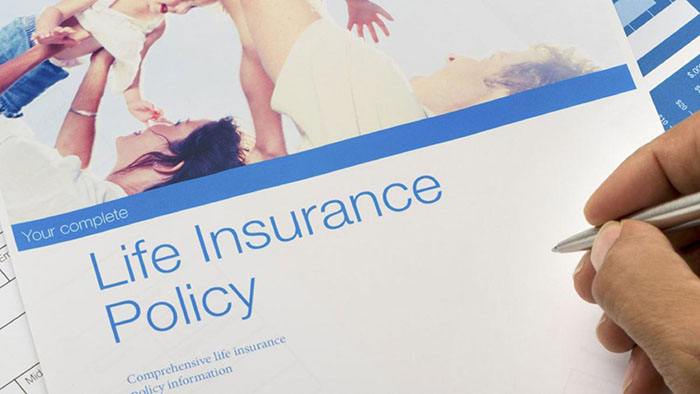Personal loans can serve many purposes, from a quick infusion of cash to funding a major purchase to paying down high-interest debt.
That flexibility in your personal liquidity can come with a price, though. In addition to paying regular monthly interest on the outstanding balance of your loan, you may have to pay a variety of different fees when taking out a personal loan.
AmONE created this guide to personal loan fees to help consumers better understand the various fees personal loan lenders may charge.
Common Personal Loan Fees
Explanations of Personal Loan Fees
Here’s an in-depth breakdown of the various personal loan fees discussed above.
Application Fee
Personal loan lenders rarely charge application fees. If they do, it’s to cover costs associated with processing your personal loan application.
Origination Fee
This fee is common for mortgages but less so for personal loans. Loan origination fees are usually represented as a percentage of your total loan amount and may range from 1% to 10% depending on the lender and creditworthiness of the borrower. If you borrow $10,000 with a 1% loan origination fee, you’ll pay $100. If it’s 8%, you’ll pay $800.
Prepayment Fee
Personal loan lenders are banking on earning profits from the interest charged on loans. Paying the loan off early dilutes profitability, so some lenders may charge a prepayment penalty. This fee is usually calculated based on the remaining length of the loan and your outstanding balance, so fee amounts can vary between lenders and borrowers.
Late Payment Fee
Lenders typically charge late fees for missing payments, regardless of the loan type. You may pay a standard flat rate, or a percentage based on the amount of your monthly installment. If your monthly payment is $500, and the late payment fee is 5%, a late payment will cost you $25. If your loan payment is $1,000, the fee is $50. There’s usually a cap on how much lenders can charge on late fee percentages.
Returned Payment Fee
Bouncing a check is never a good thing. Returned check fees can range from $25 to $50 depending on the lender.
Unemployment Insurance
You can buy insurance to help protect your credit if you default on your loan in certain circumstances, such as losing your job or medical emergency. If you lose your job, an involuntary employment insurance policy will cover your monthly installments for a set period of time. Similarly, credit disability insurance protects you if you become unable to work due to personal health issues. The insurance provider makes payments directly to your lender if these policies kick in before your loan matures.
Which Lenders Have the Best Personal Loan Rates?
Finding the lender with the best personal loan to meet your needs is as simple as using our search tool. Compare personal loans and find the best rates being offered today.
What Impacts the Annual Percentage Rate On Your Loan Offers?
Personal loans are generally unsecured, which means you don’t have to have personal collateral backing the loan as you do with your mortgage or auto loan. With unsecured loans, you’ll have to have a good to outstanding credit score to get the best offers.
Your FICO score is one of the most important factors in determining the APR on your personal loan. FICO scores range from 300 to 850, but many lenders won’t lend money to borrowers with credit scores under 600. The lowest APRs mentioned in this article are for borrowers with exceptional credit scores at 800 or higher.
How to Avoid or Lower Personal Loan Fees
When researching personal loans, you’ll likely find a wide range of options from lenders, and no two offers are the same. Some personal loan fees may be unavoidable, but for many, you can follow the tips below to avoid or lower these additional personal loan costs.
Application and Loan Origin Fees
We grouped these two fees together because neither fee is typical for personal loan lenders – especially for creditworthy borrowers who have many options from which to choose. You may be able to avoid these fees altogether by selecting personal loan lenders who don’t charge application or loan origination fees. If your prospective lender does charge these fees, make sure you know upfront how much they will cost.
Prepayment Fee
If your lender charges a prepayment fee – and many do not – it may be calculated as a flat fee, a percentage of the lost interest, or a percentage of your outstanding loan balance. The best way to avoid a prepayment penalty is to select a lender that doesn’t charge this fee. Oftentimes, prepayment penalties are higher in the beginning of the loan than at the end, so you might pay less if the loan is near maturity. You may find that keeping the loan in place but paying extra to lower the balance could save you more money through lower interest than you would pay in early payment fees.
Returned Payment Fee
You can manage this fee by always ensuring you have sufficient funds to cover your installment check. Alternatively, you could set up direct payments and avoid the hassle of paper checks. Auto-pay works for many borrowers but paying online directly from your checking account ensures you always have enough funds to cover your monthly installment.
Late Payment Fee
Late payments can happen for a variety of reasons. Your lender may have a forbearance period (one to three months) that allows you to catch up financially. Alternatively, a call to customer service may lead them to waive fees for first time late payments. Setting up automatic payments is the easiest way to ensure you always pay your monthly installment on time. You also may be able to change your payment date to ensure they fall on or near dates when you get paychecks and are flush with cash.
Unemployment Insurance
If you become disabled or lose your job, this insurance will work in your favor. If you don’t, it will add unnecessary financial burden to your personal loan. Weigh your options carefully before purchasing credit disability or involuntary unemployment insurance. If you think this insurance is a must, you may be able to shop for favorable rates amongst providers.
Personal Loan Lender Fee Examples
Personal loans are as varied as the colors in a big box of crayons. Lenders have different fee structures, as well as varying annual percentage rates. It’s important to pay attention to potential fees since they can significantly add to and impact your borrowing costs. You’ll also want to pay close attention to the loan’s annual percentage rate, since that’s how much it will cost you in interest to borrow the money you need.
Frequently Asked Questions
Personal loan amounts can be as small as $3,500 to $100,000. The amount you can borrow will largely depend on your FICO score and other factors such as income, existing debt, and employment history.
The best option is the one that meets your personal requirements and financing needs. Online and peer-to-peer lenders typically have more fees baked into their loan offerings. Traditional lenders have little to no fees but may have more stringent loan qualification criteria.
One of the best things about personal loans is that the funds can be used for almost anything you want. Debt consolidation – rolling multiple payments into one fixed payment – is a common reason to take out a personal loan. Swapping high-interest credit card debt for a lower-interest personal loan is another savings strategy. Some borrowers use personal loans to fund major purchases such as wedding rings, swimming pools or home renovations, while others use the funds to take once-in-a-lifetime vacations, pay for weddings, or take care of unexpected family emergencies.























